Urban Agriculture in Morocco: Which Model Is Adaptable to Socio-Economic and Environmental Challenges? (The Case of Marrakech) †
Abstract
:1. Introduction
- Assessment of the current situation of urban agriculture and its socio-economic impact.
- Identification of current obstacles and challenges.
- Recommendation of new, creative agricultural approaches adapted to the city’s specificity.
2. Materials and Methods
2.1. Research Questions
- What challenges hinder sustainable agriculture in Marrakech?
- Which agricultural approach can tackle socio-economic and environmental issues unique to Marrakech?
2.2. Research Approach and Materials
- Descriptive/analytical approach: This approach involves diagnosing and detailing the current state of agriculture in Marrakech, highlighting its strengths and weaknesses. We use field-collected data to address our research questions;
- The survey: Through a questionnaire aimed at farmers, this survey seeks to understand the current situation of agriculture in the city and identify challenges and obstacles;
- Computer software: We used Geographic Information System (GIS 10.8) to create maps and employed statistical software to examine the field-collected data.
2.3. Study Area
3. Results
3.1. Climate Change and Human Impact: Impediments to Agriculture
3.2. Urban Growth and Socio-Economic Demands
3.3. Which Agricultural Model Is Adaptable to Local Specificity?
3.3.1. Hydroponic Farming: When Science Marries Nature
3.3.2. Drone Technology: Toward a Fourth Agricultural Revolution
3.3.3. Rooftop Gardens and Community Gardens: Planting the Seeds for a Green Future
4. Discussion
5. Conclusions and Prospects
Author Contributions
Funding
Institutional Review Board Statement
Informed Consent Statement
Data Availability Statement
Conflicts of Interest
References
- Girardet, H. Cities People Planet: Livable Cities for a Sustainable World; Wiley Academy: Chichester, UK, 2004. [Google Scholar]
- FAO (Food and Agriculture Organization). FAOSTAT Database Collections; Food and Agriculture Organization of the United Nations: Rome, Italy, 2012; Available online: http://faostat.fao.org (accessed on 8 October 2023).
- Duchemin, É. (Ed.) Agriculture Urbaine: Aménager et Nourrir la Ville; VertigO. Presses de Marquis Imprimeur Inc.: Montmagny, QC, Canada, 2013. [Google Scholar]
- Campbell, L.K. Getting farming on the agenda: Planning, policymaking, and governance practices of urban agriculture in New York City. Urban For. Urban Green. 2016, 19, 295–305. [Google Scholar] [CrossRef]
- Pégurier, J. Espaces Urbains en Formation dans le Tensift: Essai de Sociologie Régionale; Société marocaine des éditeurs réunis: Rabat, Morocco, 1981. [Google Scholar]
- Aboulaiche, A.; Gallad, M. Harnessing the potential of vegetable waste: A path towards sustainable development in Marrakech (Morocco). Rev. Int. De La Rech. Sci. (Rev. -IRS) 2023, 1, 546–557. [Google Scholar]
- Van Os, E.A.; Stanghellini, C. Diffusion and environmental aspects of soilless growing systems. Italus Hortus 2001, 8, 9–15. [Google Scholar]
- Pardossi, A.; Malorgio, F.; Incrocci, L.; Campiotti, C.A.; Tognoni, F. Comparison between two methods to control nutrient delivery to greenhouse melons grown in recirculating nutrient solution culture. Sci. Hortic. 2002, 92, 89–95. [Google Scholar] [CrossRef]
- Sun, Y.; Wang, X.; Ma, C.; Zhang, Q. Effects of nitrogen and phosphorus addition on agronomic characters, photosynthetic performance and anatomical structure of alfalfa in northern Xinjiang, China. Agronomy 2022, 12, 1613. [Google Scholar] [CrossRef]
- Hafeez, A.; Husain, M.A.; Singh, S.P.; Chauhan, A.; Khan, M.T.; Kumar, N.; Chauhan, A.; Soni, S.K. Implementation of drone technology for farm monitoring & pesticide spraying: A review. Inf. Process. Agric. 2023, 10, 192–203. [Google Scholar]
- Su, F.; Zhao, Y.; Wang, G.; Liu, P.; Yan, Y.; Zu, L. Tomato Maturity Classification Based on SE-YOLOv3-MobileNetV1 Network under Nature Greenhouse Environment. Agronomy 2022, 12, 1638. [Google Scholar] [CrossRef]
- Allmendinger, A.; Spaeth, M.; Saile, M.; Peteinatos, G.G.; Gerhards, R. Precision chemical weed management strategies: A review and a design of a new CNN-based modular spot sprayer. Agronomy 2022, 12, 1620. [Google Scholar] [CrossRef]
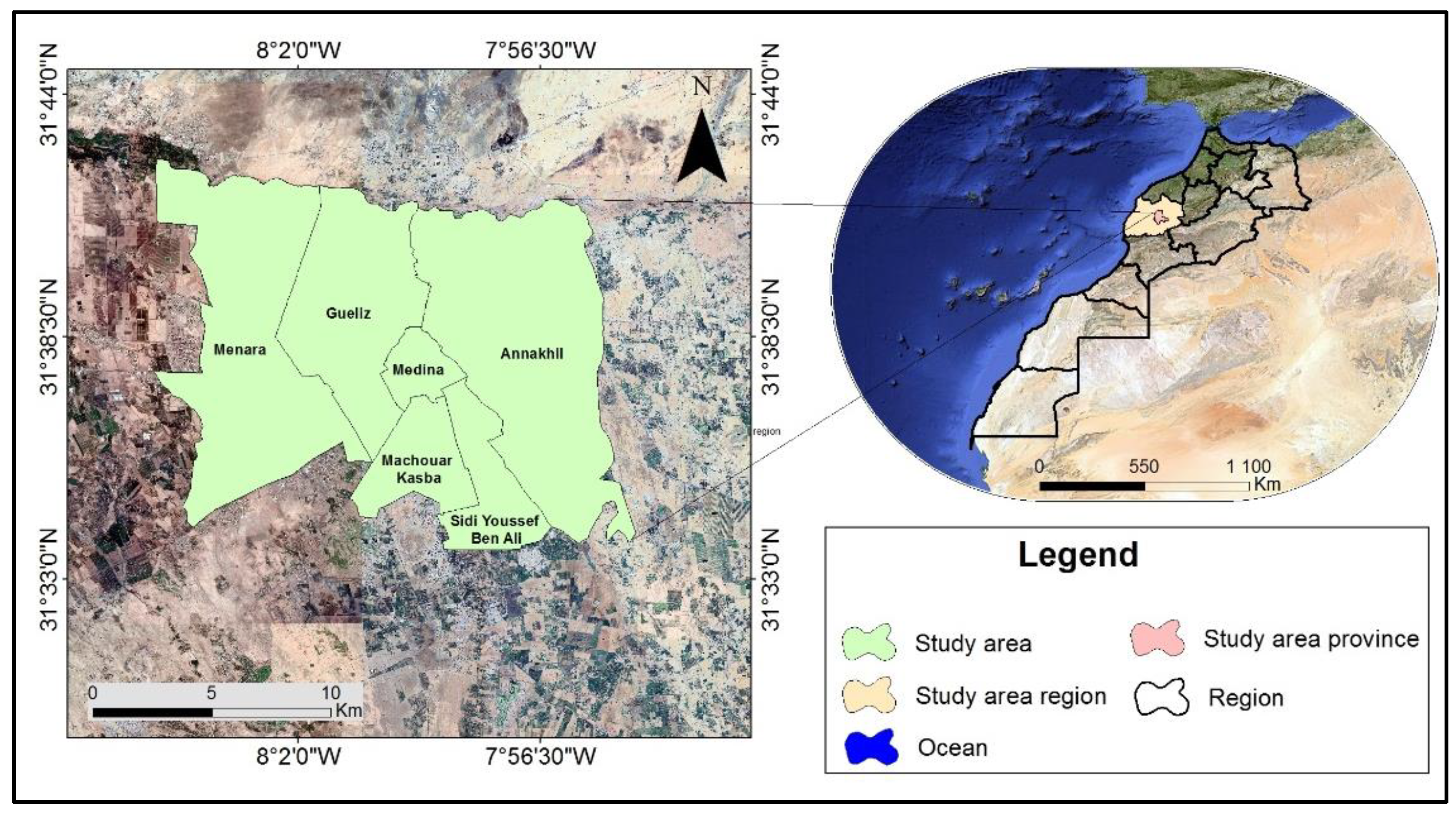
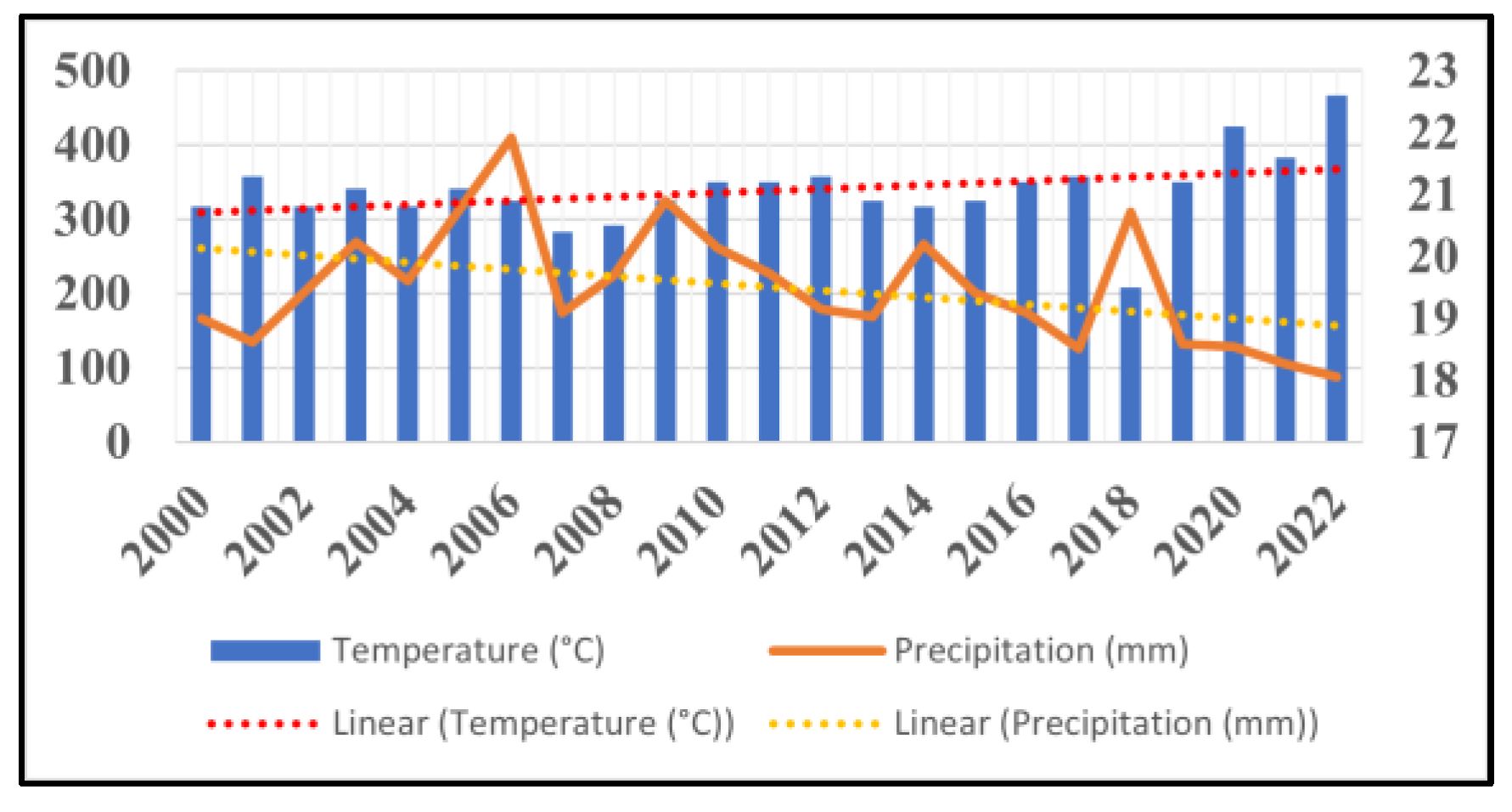
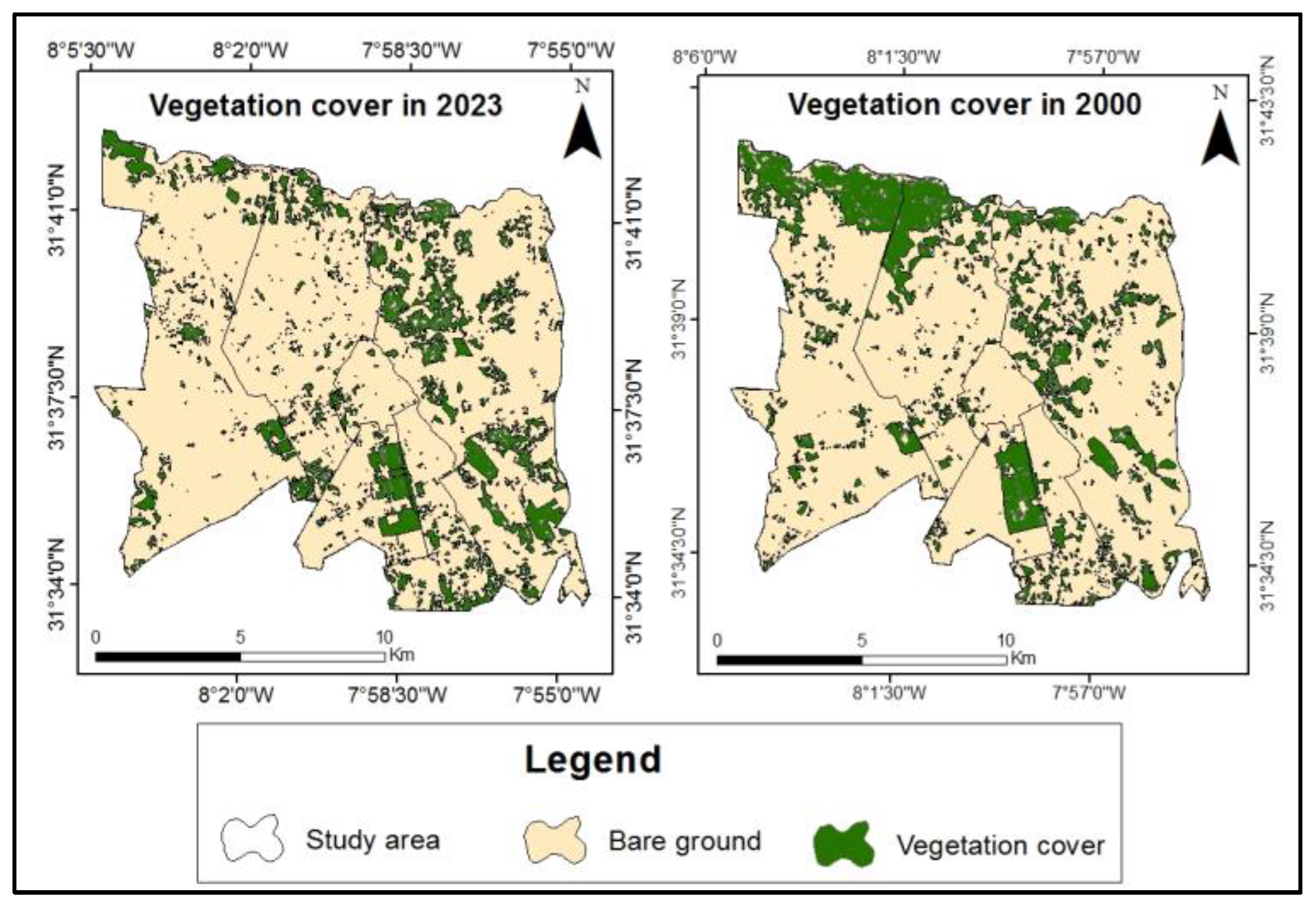
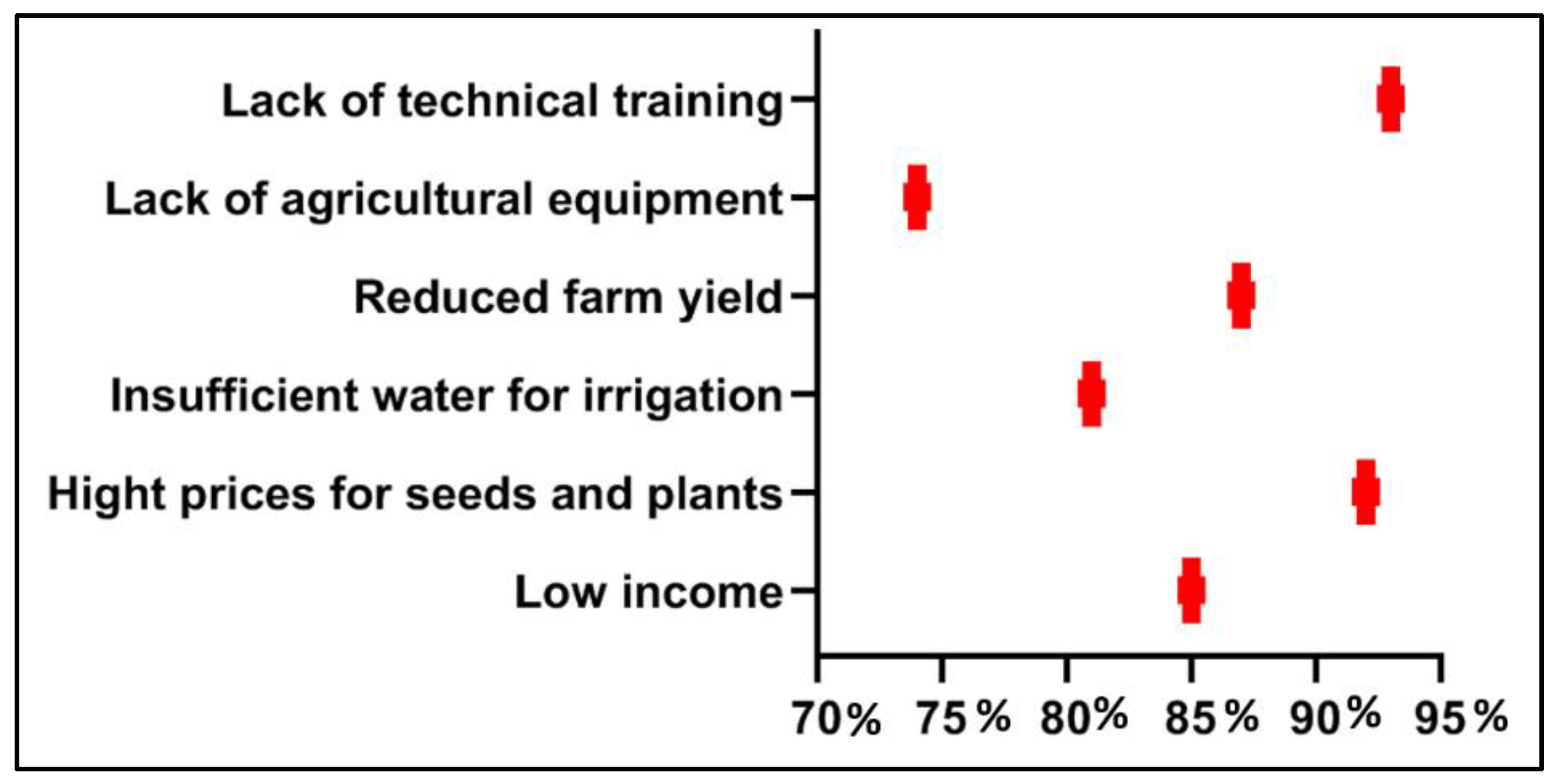
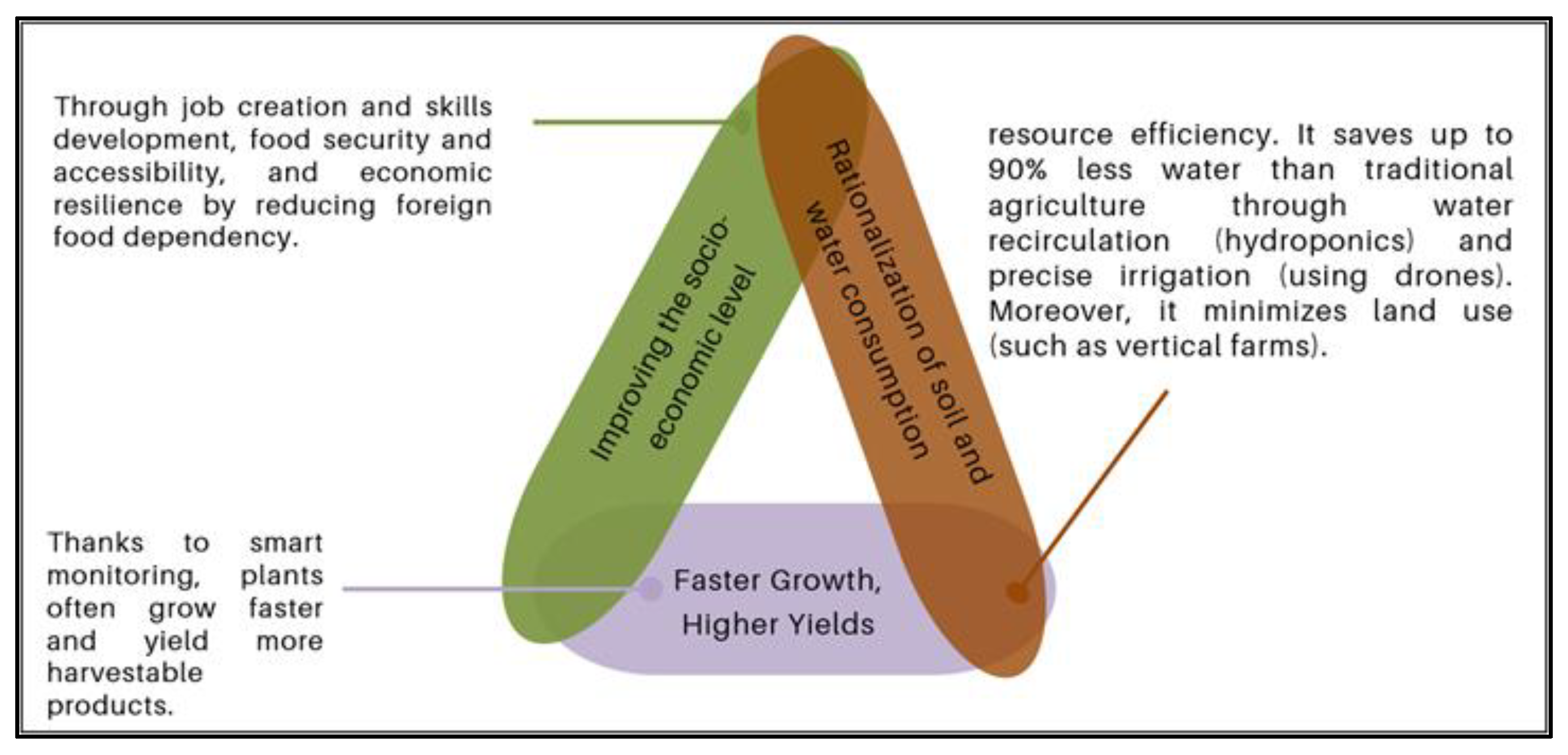
Disclaimer/Publisher’s Note: The statements, opinions and data contained in all publications are solely those of the individual author(s) and contributor(s) and not of MDPI and/or the editor(s). MDPI and/or the editor(s) disclaim responsibility for any injury to people or property resulting from any ideas, methods, instructions or products referred to in the content. |
© 2023 by the authors. Licensee MDPI, Basel, Switzerland. This article is an open access article distributed under the terms and conditions of the Creative Commons Attribution (CC BY) license (https://creativecommons.org/licenses/by/4.0/).
Share and Cite
Anas, A.; Mohammed, G. Urban Agriculture in Morocco: Which Model Is Adaptable to Socio-Economic and Environmental Challenges? (The Case of Marrakech). Biol. Life Sci. Forum 2023, 27, 56. https://doi.org/10.3390/IECAG2023-15987
Anas A, Mohammed G. Urban Agriculture in Morocco: Which Model Is Adaptable to Socio-Economic and Environmental Challenges? (The Case of Marrakech). Biology and Life Sciences Forum. 2023; 27(1):56. https://doi.org/10.3390/IECAG2023-15987
Chicago/Turabian StyleAnas, Aboulaiche, and Gallad Mohammed. 2023. "Urban Agriculture in Morocco: Which Model Is Adaptable to Socio-Economic and Environmental Challenges? (The Case of Marrakech)" Biology and Life Sciences Forum 27, no. 1: 56. https://doi.org/10.3390/IECAG2023-15987
APA StyleAnas, A., & Mohammed, G. (2023). Urban Agriculture in Morocco: Which Model Is Adaptable to Socio-Economic and Environmental Challenges? (The Case of Marrakech). Biology and Life Sciences Forum, 27(1), 56. https://doi.org/10.3390/IECAG2023-15987




